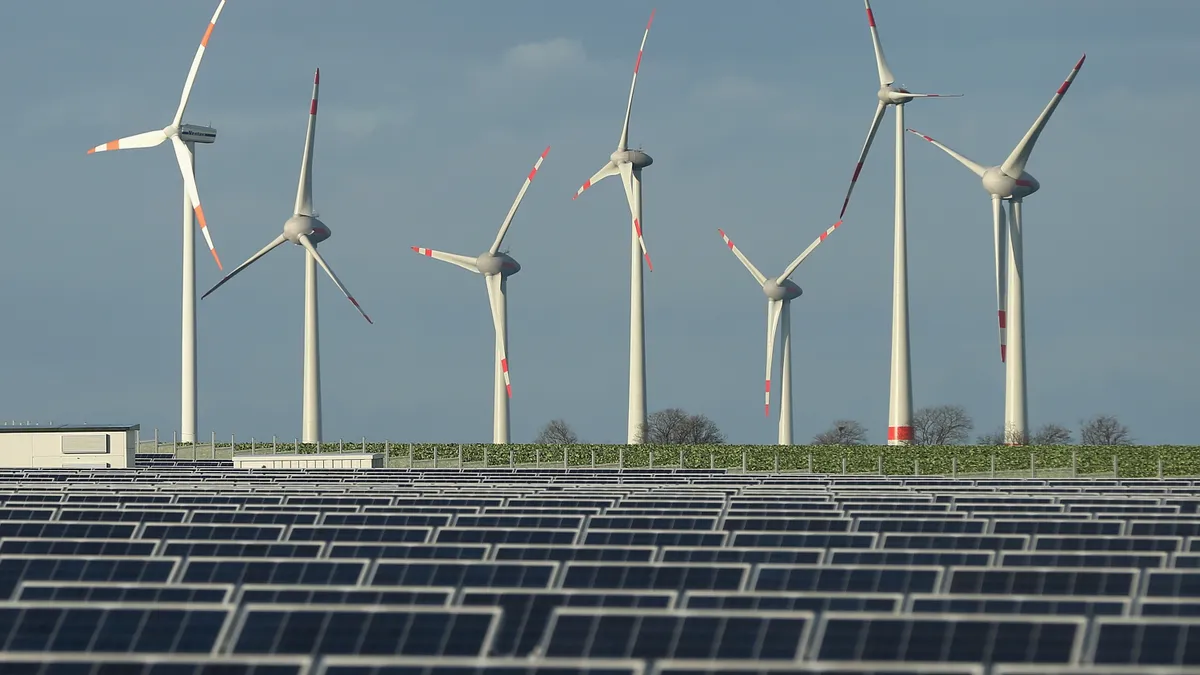Dive Brief:
-
The Smart Electric Power Alliance (SEPA) has released a new white paper outlining a framework for identifying high-impact actions to reduce carbon emissions.
-
The paper, developed with input from industry leaders such as Xcel Energy, Microsoft and Google, outlines a five-step process for evaluating an organization's options for reducing carbon, and selecting the actions which will have the greatest impact given organization-specific circumstances.
-
The framework should help spur action among organizations that want to reduce emissions, but worry about making a wrong choice. "We're trying to reduce uncertainty and provide some guidance," Janet Gail Besser, vice president of regulatory and business innovation at SEPA, said Wednesday.
Dive Insight:
A new paper outlining a framework for thinking about decarbonization will help businesses, governments and utilities throughout the U.S. avoid decision paralysis and advance their emissions goals, according to SEPA, a non-profit group that supports a shift to carbon-free electrcity.
The whitepaper describes a variety of actions already employed by decarbonization leaders and provides analysis of both the ease of each strategy, and its potential impact on carbon emissions, based on both published research and feedback about the real-world experiences of the likes of Google, Harvard Office for Sustainability, the City of Boston and others. In order to better capture the variety of on-the-ground circumstances organizations face when attempting to decarbonize their operations, SEPA also included a five-step process with a series of questions and discussion topics to help organizations find solutions best suited to their unique situations.
"The framework provides a valuable guide for a wide range of organizations to assess how they can maximize their contribution to grid-level decarbonization, taking into account their particular objectives, context, and available actions," Caroline Golin, global head of energy market development and policy at Google, said in a statement. "Many organizations are at different points in their decarbonization journeys, but all can take actions that enhance their decarbonization impact."
Factors organizations should consider include what kind of entity they are — a business, utility, government or something else — what kind of objectives they need to achieve, and the state of the electric grid in their area, according to the report. "When there is uncertainty, there can be a tendency not to act, because you're not sure whether the action you're thinking about is a good idea," Besser said.
For example, signing a power purchase agreement to add more renewable energy to the grid might be a great course of action in a region where carbon-free electricity is limited, Besser said. But that same course of action in an area where renewables are already plentiful may crowd interconnection queues, and the resulting energy may be curtailed, according to Besser.
"When the penetration of non-emitting energy resources was low, then the addition of any non-emitting resource reduced carbon," Besser said. But as time has gone on, decarbonization has become more complex, making it "even more important to understand what actions are going to have the greatest impact," she said.
The framework will also help a greater variety of organizations begin a path toward decarbonization—a key goal for decarbonization leaders like Microsoft, which has begun to include eliminating emissions from suppliers and customers in their own emissions goals.
"The more information, the more transparency, and the more accuracy we have, the better off all entities are in being able to make decisions that are going to have the highest impact," Mariah Kennedy, director of global datacenter energy strategy for Microsoft, said.
The report highlights important first steps, such as establishing an emissions baseline, that are relevant to electric customers large and small, according to Jeff Lyng, director of energy and environmental policy at Xcel Energy. Lyng said he found much of the report resonated with Xcel's own path and current activities as the company seeks new carbon-free sources of dispatchable generation.
"This report is not a policy prescription, it's a framework of options," Lyng said. "That's how we intend to use it, and how we'll encourage our customers to think about it."














